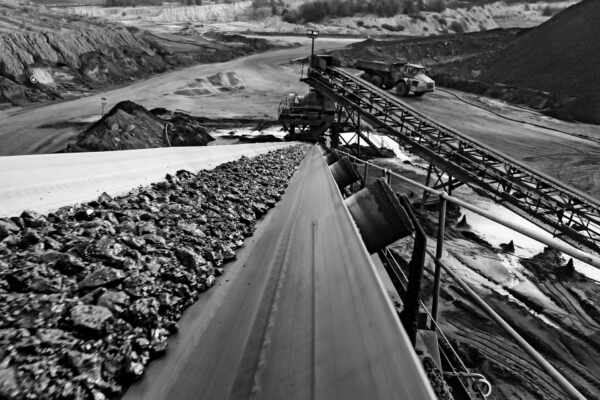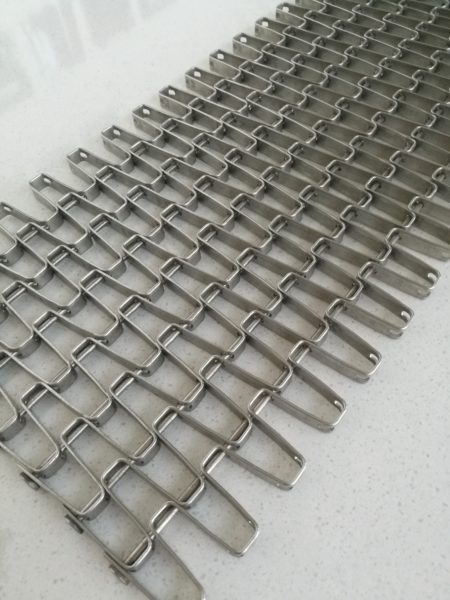High-speed conveyor belt systems play a significant role in today’s fast-paced manufacturing and production environments, contributing to increased productivity, efficiency, and overall competitiveness in the market. As facilities strive to meet the ever-growing consumer demands and adapt to rapid technological advancements, it’s becoming crucial to optimise conveyor belt systems for maximised speed and efficiency without compromising product quality and safety.
Let’s list the key factors that influence the performance of high-speed conveyor belt systems within manufacturing operations. From choosing the right design and materials to integrating cutting-edge technology and adopting effective maintenance practices, we’ll provide you with insights and techniques necessary for delivering optimal system performance and maximal productivity. Harnessing the potential of high-speed conveyor belt systems can give your facility the competitive edge it needs to excel in the ever-evolving industrial landscape.
With years of experience in conveyor belt systems, our goal is to share our expertise and empower manufacturers to excel by taking full advantage of the potential offered by high-speed conveyor belt systems. As you embark on this journey with us, you’ll gain a deeper understanding of the essential factors that contribute to increased efficiency, reduced downtime, and improved overall system performance in the context of high-speed conveyor belt systems, bolstering your confidence to make well-informed decisions for your manufacturing facility’s success.
1. Choosing the Right Design for Your High-Speed Conveyor Belt System
One of the most critical factors in achieving optimal performance from high-speed conveyor belt systems is selecting the right design to suit your facility’s unique requirements. By understanding your operational needs, product specifications, and production demands, you’ll be better equipped to choose the most suitable conveyor belt system design for your application––ultimately contributing to maximised speed, efficiency, and productivity.
The key design aspects to consider include:
– Belt Width: Ensuring the belt width is appropriate for the product size and throughput demands can help minimise potential bottlenecks and maintain consistent production rates.
– Roller Diameter: Selecting the right roller diameter can greatly impact belt traction and overall system performance.
– Incline Angles: Designing your conveyor belt system to gracefully accommodate inclines and declines can help mitigate product slippage and facilitate smooth transitions.
2. Selecting the Right Conveyor Belt Material for High-Speed Applications
The choice of conveyor belt material can significantly impact the efficiency and longevity of high-speed applications. In order to maximise productivity and reduce downtime, it’s crucial to select a material that’s durable, low-maintenance, and compatible with your facility’s specific operational needs.
Some popular conveyor belt materials for high-speed applications include:
Polyurethane: Known for their excellent wear and abrasion resistance, polyurethane conveyor belts are commonly used in the food processing industry due to their easy cleanability and compliance with food safety regulations.
– Synthetic Rubber: Offering high flexibility and excellent resistance to chemicals and temperature variations, synthetic rubber conveyor belts are a popular choice for high-speed applications in the automotive, aerospace, and heavy manufacturing industries.
3. Integrating Cutting-Edge Technology for Optimal Conveyor System Performance
As technology continues to evolve, there is an increasing array of tools and innovations available to help enhance the efficiency of high-speed conveyor belt systems. By integrating the latest technology, you can streamline manufacturing processes, reduce downtime, and maximise productivity.
Key technologies to consider for high-speed conveyor systems include:
– Automated Conveyor Controls: Implementing automated control systems allows for more precise and efficient regulation of conveyor belt speeds, making it easier to optimise the system for maximum productivity.
– Vision Systems and Sensors: Incorporating vision systems and sensors can boost the accuracy of high-speed applications, enabling real-time monitoring of product orientation, dimensions, and quality and providing valuable feedback for system optimisation.
– Robotics Integration: Combining robotic automation with high-speed conveyor systems can help achieve new levels of efficiency and productivity by automating repetitive tasks and reducing the need for manual intervention.
4. Implementing Effective Maintenance Practices for Sustained High-Speed Performance
Proactive maintenance is vital for ensuring your high-speed conveyor belt systems operate at peak efficiency over time. Establishing regular maintenance routines, combined with timely inspections and repairs, can help identify potential issues before they escalate, reducing costly downtime and extending the life span of your conveyor belt system.
Essential maintenance practices for high-speed conveyor belt systems include:
– Scheduled Inspections: Conduct regular inspections of belt surfaces and system components, checking for signs of wear, damage, or misalignment.
– Component Lubrication: Ensure proper lubrication of system components such as bearings, rollers, and pulleys to minimise friction, reduce wear, and maintain overall system efficiency.
– Belt Tension and Tracking Monitoring: Regularly assess belt tension and alignment, making necessary adjustments to maintain consistent performance and prevent premature wear or damage.
Conclusion
Striving for high-speed, efficient conveyor belt systems in your manufacturing operations requires a comprehensive approach that addresses critical factors such as design, materials, technology, and maintenance practices. By applying the strategies outlined in this guide, you can make more informed decisions on optimising your high-speed conveyor belt systems to drive productivity, efficiency, and success in your facility.
If you’re looking to enhance your conveyor belt system and maximise productivity within your manufacturing operations, reach out to us for expert advice and a comprehensive range of conveyor belts to suit your unique application needs. Our team of conveyor belt specialists is here to help you navigate the complexities of high-speed conveyor systems and provide tailored solutions for your business. Contact Change Parts Pty Ltd today to learn more about how our expertise can drive your facility’s success.




